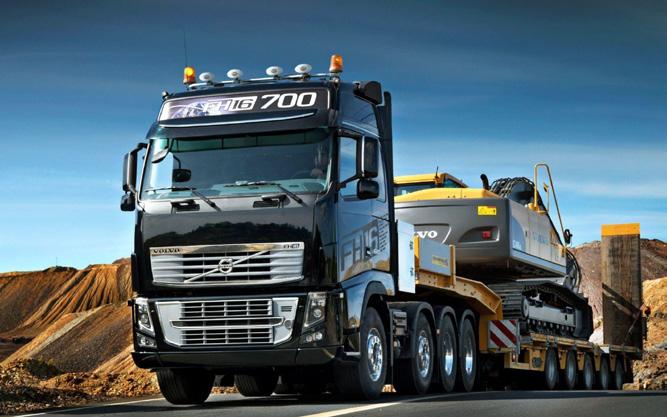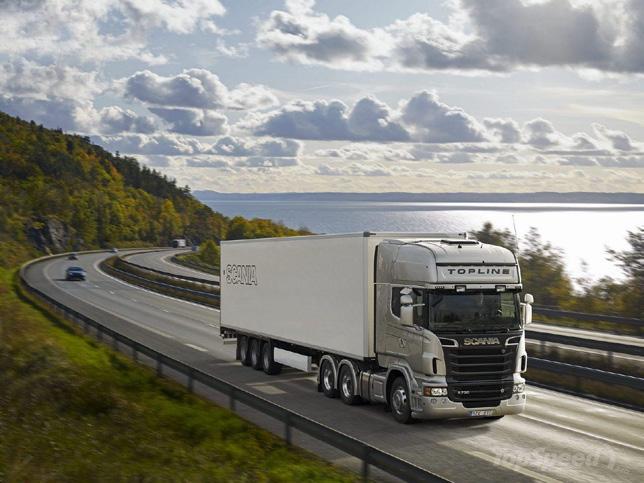
4 minute read
AROUND THE CORNER
TURN SAVINGS INTO EV INVESTMENT
Samer Choucair says fleet managers looking to reduce their carbon footprints can implement a range of measures to the vehicles they already own and use the savings to begin their transition into EVs.
of legislation to enforce green vehicles to be used in fleets, the higher purchase cost of EVs and a lack of historical data comparing the total cost of ownership of a green fleet with an ICE fleet. Sacrifices need to be made, and these barriers can be overcome if the world is to conserve its ecosystem.
In Dubai, DEWA has solved one significant problem by spearheading the rollout of charging points. We at ION have partnered with SEWA to establish a charger network in Sharjah. Resistance to
We should soon see the Tesla Semi on the region’s roads”

the idea of EVs will, we believe, disappear with time and greater awareness.
The debate over the overall cost of sustainability measures will continue. In the short term, the financial impact is negative as the cost of implementing green initiatives, including the purchase of EVs, is absorbed. There is, however, an economic benefit of 15 to 20% if the fleet is operated for three years or more.
In the context of EVs, legislation is vital for two reasons. It first and foremost signals the intent of regulators. It also incentivises the first movers in the ecosystem by providing them with subsidies or discounts. Naturally, there is friction between policymakers and civil society groups regarding the stringency of green fleet legislation; however, as we become aware of the negative effects of global warming, regulators are now being embracing opportunities to make our future more sustainable. The UK government is amongst those leading the way, with plans to end the sale of new diesel and petrol cars by 2035.
Fleet managers looking to reduce their carbon footprints can implement a range of measures to the vehicles they already own. As these savings start to manifest on balance sheets, they can begin planning the long-term transition to an electric fleet with motivated vigor, and a belief that change is both feasible, and profitable, in the not so distant future. ION is a sustainable transportation company, established in 2018 as a joint venture between CE-Creates (Crescent Enterprises) and Bee’ah.

INNOVATIVE AND COMPETITIVE BEARING SOLUTIONS FOR YOUR TRUCK AND FLEET





PERFORMS BEST WITH THE RIGHT LUBRICATION SOLUTION



HEAR MORE FROM THE SKF’S TRUSTED PARTNER IN THE MIDDLE EAST
MORE DELAYS FOR TESLA
Tesla said last month that the launch of the all-electric Tesla Semi has been once again delayed with production and deliveries now penciled in for 2021.

WhatsApp: +971-54-998-1442 E-mail: export@mcb.ae www.mcb.ae
Jesús Sancho, managing director, ACCIONA ME on the paradigm shift that is just ‘around the corner’ FUTURE MOBILITY: THE NEXT STEPS WE NEED TO TAKE

Mobility has always been a gateway for development of our society but it has also brought some other impact to the environment that, over time, may have worryingly contributed to the greenhouse effect.
At the beginning of the 20th century, the appearance of the internal combustion engine followed by the global passenger car changed the landscape forever. The car was a symbol and evidence of prosperity, but it caused great impacts on people: traffic congestion, increased accident rate and a significant pollution. The car has meant, since its invention, a success story but everything indicates that a paradigm shift is around the corner.
Currently, the use of the different transport modes in the cities are responsible for 40% of the urban emissions. More than half of the World’s urban population was exposed last year to pollution levels at least 2.5 times higher than the ones considered as healthy standards. It is estimated that air pollution already causes up to 7 million deaths a year. According to the WHO, one-fourth of all estimated global deaths are linked to the environment.
This problem is exacerbated by the high population growth, especially in large cities.
The World’s cities occupy only 3% of the land but produce 75% of the total carbon emissions.
The ever-increasing population in the cities of the future will need to meet the demand for transport and social infrastructure of a higher complexity and in accordance with the 17 Objectives for Sustainable Development of the United Nations (UN). Additional investment is required in order to build either basic or complex infrastructures that shall ensure economic development and social welfare, with special emphasis on affordable, sustainable and equitable access for all.
One of the main challenges that we shall face as a society in some already collapsed cities,






